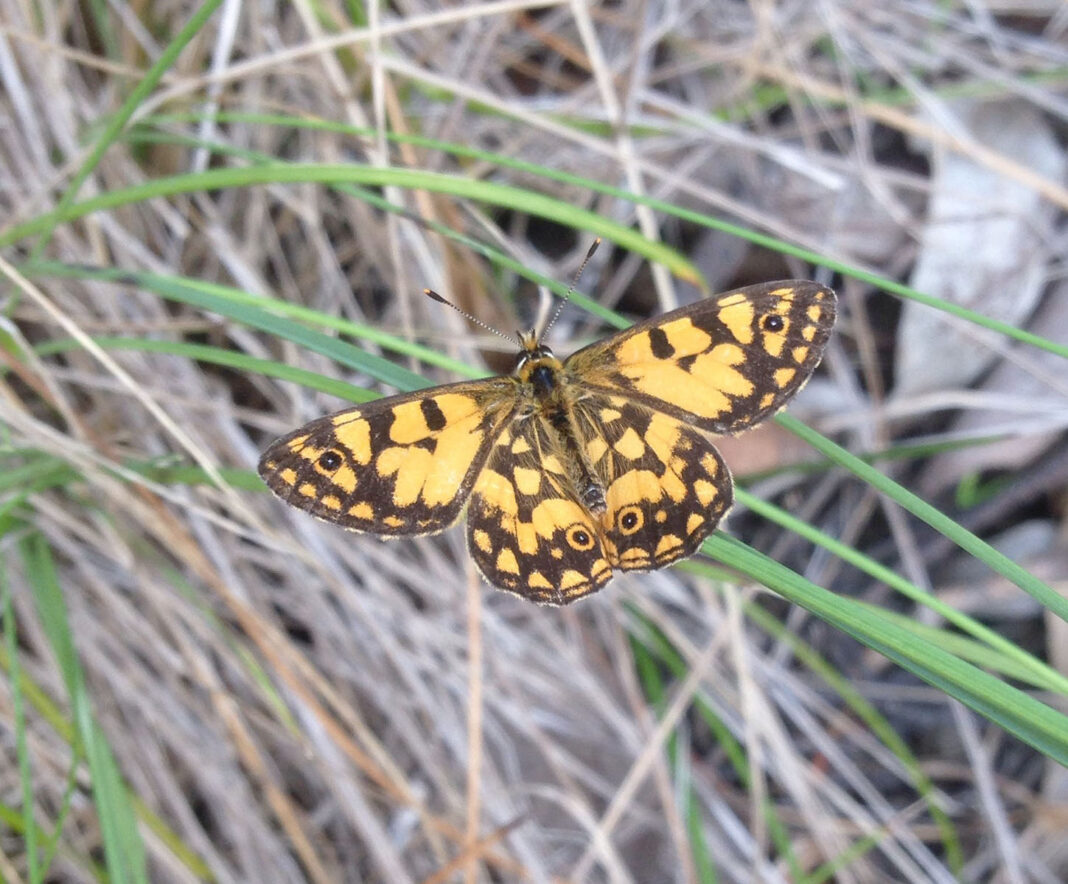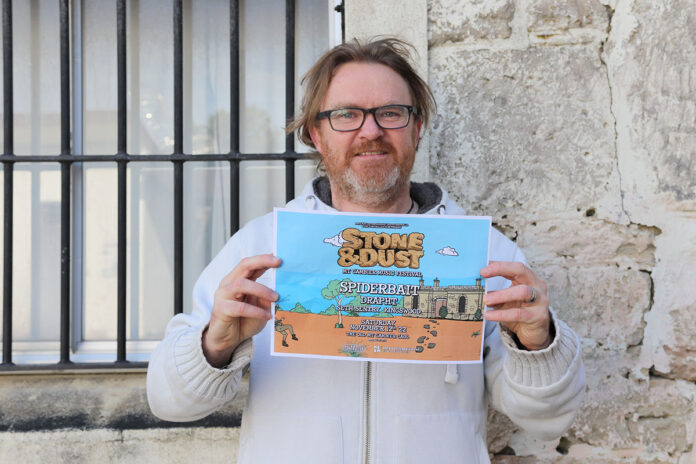Abutterfly species thought to be extinct has been sighted recently in native forest reserve near Mount Burr.
Nature Glenelg Trust Senior Ecologist Bryan Haywood made the lucky Silver Xenica find during a routine visit to the Overland Track Native Forest Reserve.
“I could not believe my luck that day,” Mr Haywood said.
“Conditions were perfectly sunny and calm and the butterflies were behaving as they should – wandering about in the Swamp Gum grassy woodland and wetland areas.”
As part of a project to encourage new populations of the Silver Xenica species, Nature Glenelg Trust translocated females and eggs from the Dartmoor area to the Reserve back in 2018.
“This species is our smallest butterfly in the Satyrine family,” Mr Haywood said.
“The top of their wings is dark brown with yellow patches and they have these amazing silver scallop shaped stripes on their underwing that you can see while they are resting.
“This sighting at Mount Burr is a promising sign the translocation was successful.”
OneFortyOne has partnered with Nature Glenelg Trust to support environmental work including threatened species projects such as this around plantations and across the region.
“We would not be able to do this work if it was not for the support we have received,” Mr Haywood said.
“There’s always more to do.”
Mr Haywood said invertebrates were not officially listed in under state parks and wildlife threatened species legislation in South Australia and the Northern Territory.
“Nominations have been prepared and forwarded to the Threatened Species Unit in South Australia in the hope they will be considered and bring invertebrates into the public domain,” he said.
“By listing these species it will better ensure their recognition and encourage land managers to identify and protect habitat.”
This population is still relatively low and unlikely to remain viable, however annual monitoring and expansion into a breeding program could bolster numbers.




